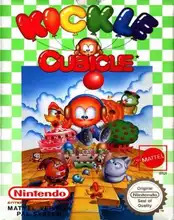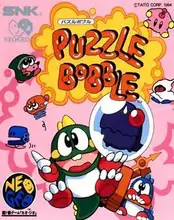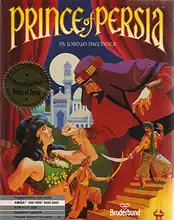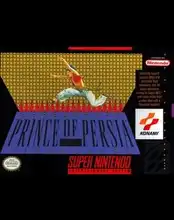Stepping back into the pixelated worlds of yesteryear brings a flood of memories. Beyond the platforming leaps and intense dogfights, one element consistently challenged our young minds and delivered unparalleled satisfaction: puzzle-solving. Retro games, across genres, were absolute masters at presenting conundrums that made us pause, think, and occasionally, pull our hair out just a little.
From deciphering obscure clues in text adventures to figuring out the perfect sequence of item usage in a point-and-click classic, the art of solving puzzles was integral to the retro gaming experience. It wasn't just about reflexes; it was a genuine workout for the brain, rewarding patience and cleverness in equal measure.
Why Retro Puzzles Stick With Us
There's something unique about the puzzles found in older games. Perhaps it's the limitations of the technology forcing developers to be creative, or maybe it's just the rose-tinted glasses of nostalgia. Whatever the reason, these challenges felt significant. Successfully navigating a labyrinth, unlocking a hidden passage with a seemingly useless item, or finally understanding that cryptic NPC dialogue provided a rush that's hard to replicate.
These aren't just idle pastimes; engaging in puzzle-solving within games has been shown to sharpen cognitive skills. Back then, we just knew it felt good to figure things out. That feeling of overcoming a tough obstacle, that "aha!" moment after being stuck for ages, is a core part of why we love revisiting these classics. They didn't just entertain; they subtly trained our brains.
The Evolution of Retro Puzzle Design
Think back to the early days. Some retro game puzzles could feel downright unfair by today's standards. Remember pixel hunting in early adventure games, or needing to combine items in ways that defied all logic? Games like the original King's Quest series sometimes felt like they required a walkthrough from the get-go.
Then came games that started to refine the process. Titles like The Legend of Zelda: A Link to the Past on the Super Nintendo became benchmarks. As one competitor highlighted, ALttP moved away from the sometimes-cryptic nature of earlier games, introducing visual cues and dungeon designs that subtly guided the player. You found an item, and the dungeon immediately gave you a logical (usually) way to use it to progress. This design philosophy made puzzle-solving feel less like guesswork and more like a rewarding application of logic and observation.
Even within action games, puzzles were key. Metroid's exploration was built entirely around finding new abilities to bypass previously impassable obstacles – a brilliant form of environmental puzzle-solving.
Iconic Puzzle Mechanics & Genres
Retro gaming offered a diverse landscape for puzzle enthusiasts:
- Point-and-Click Adventures: The undisputed kings of inventory puzzles, dialogue trees, and environmental manipulation. Monkey Island, Day of the Tentacle, Sam & Max – these games lived and died by the cleverness (and often silliness) of their puzzles.
- Adventure RPGs: Games like Zelda or Ys blended action with dungeon crawling that required finding keys, activating switches, and using dungeon-specific items to proceed.
- Pure Puzzle Games: Titles like Myst or The 7th Guest were entirely built around intricate, often abstract, logic puzzles that tested your observational skills and patience to the limit.
- Early Survival Horror: Games like Alone in the Dark or Resident Evil (the PS1 classic counts as retro now, right?) used item-based puzzles and environmental riddles to gate progress and build tension.
Each genre approached puzzle-solving differently, but the core loop remained the same: observe, think, experiment, succeed.
The Pure Joy of Cracking a Retro Puzzle
Let's be honest, getting stuck was part of the experience. Asking friends at school, flipping through a Nintendo Power magazine, or eventually, discovering the early internet's text-based FAQs – it was a communal struggle. But that moment when you finally figured it out? Pure elation.
Maybe it was using the rubber chicken with a pulley in Monkey Island, figuring out the piano puzzle in Resident Evil, or realizing you needed to bomb a specific wall in Zelda. These moments are etched into our gaming memories. They weren't just roadblocks; they were satisfying challenges that made the journey feel earned.
Where to Find Your Next Retro Puzzle Fix
Ready to flex those vintage problem-solving muscles? The good news is, it's easier than ever to dive back in:
- GOG.com: A treasure trove of classic PC adventure games like King's Quest, Space Quest, Monkey Island, and Myst, often pre-configured to run on modern systems.
- Archive.org: The Internet Archive has a massive collection of playable-in-browser DOS games, including many puzzle-heavy titles. Just be prepared for the authentic, sometimes clunky, experience!
- Emulators (like DOSBox): If you're comfortable with a bit more setup, emulators allow you to run original game files.
- Modern Ports & Remasters: Many classic puzzle games have received modern remakes or ports to current consoles and PC storefronts, often with quality-of-life improvements.
Whether you're revisiting an old favorite or discovering a classic for the first time, the world of retro game puzzle-solving offers countless hours of engaging challenges and nostalgic fun.
Frequently Asked Questions
- Why are retro game puzzles sometimes so hard? Often due to design philosophies of the time, limited tutorials, less hand-holding, and sometimes simply obscure logic or poor visual cues compared to modern games.
- What's a good retro puzzle game for beginners? Day of the Tentacle Remastered is a great entry point into point-and-click, with logical (and hilarious) puzzles. The Legend of Zelda: A Link to the Past is also accessible thanks to its refined design.
- Are puzzle games good for your brain? Yes! Studies suggest that engaging in activities like puzzle-solving in video games can help improve critical thinking, logic, spatial reasoning, and problem-solving skills.
- Where can I legally play classic retro puzzle games? Check out digital storefronts like GOG.com, look for official ports or remasters on platforms like Steam or console stores, or explore resources like Archive.org for browser-based options.
So boot up an old favorite or try something new from the golden age. Get ready to observe, think, and experience the unique satisfaction that only classic retro game puzzle-solving can provide.




